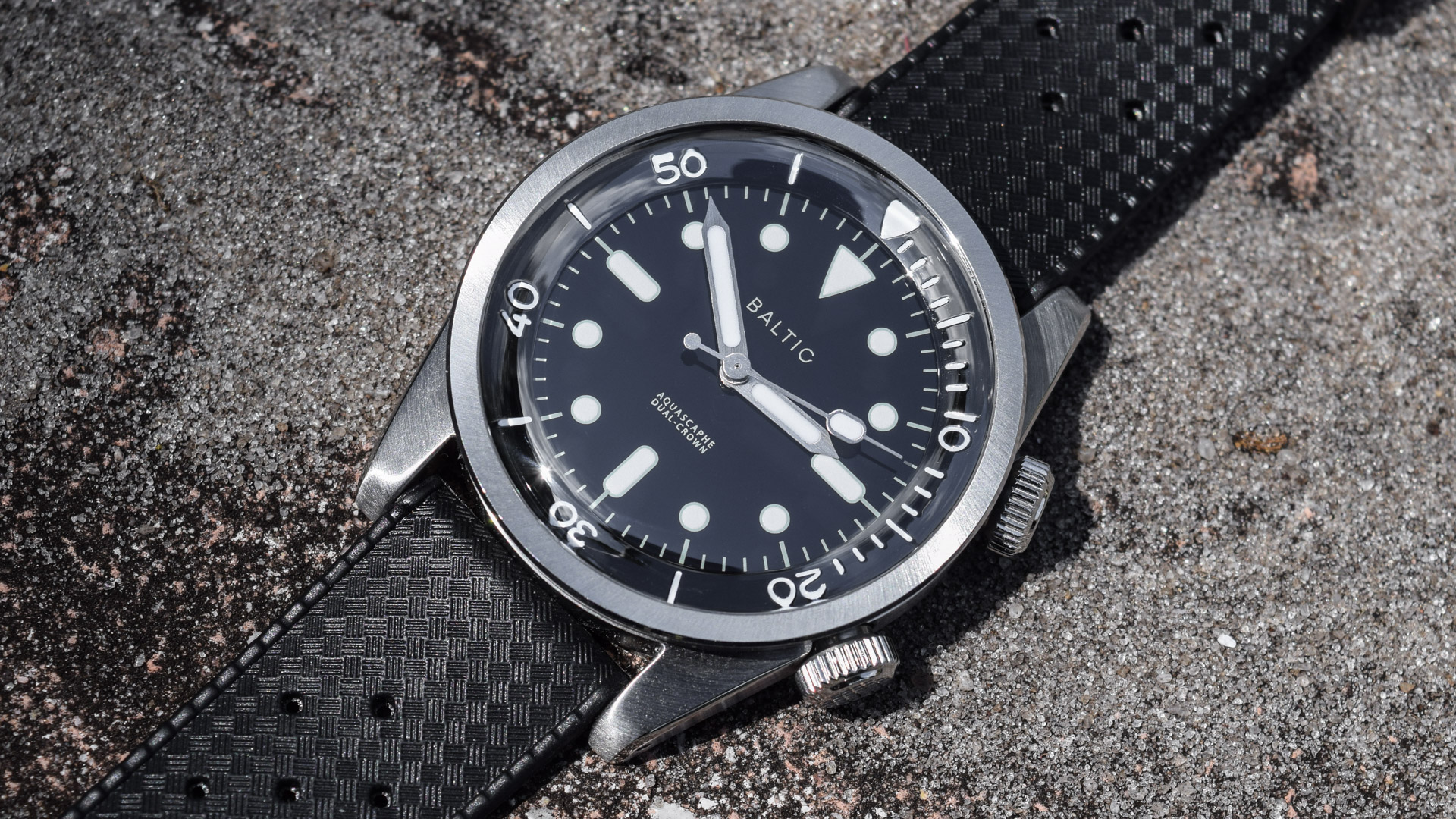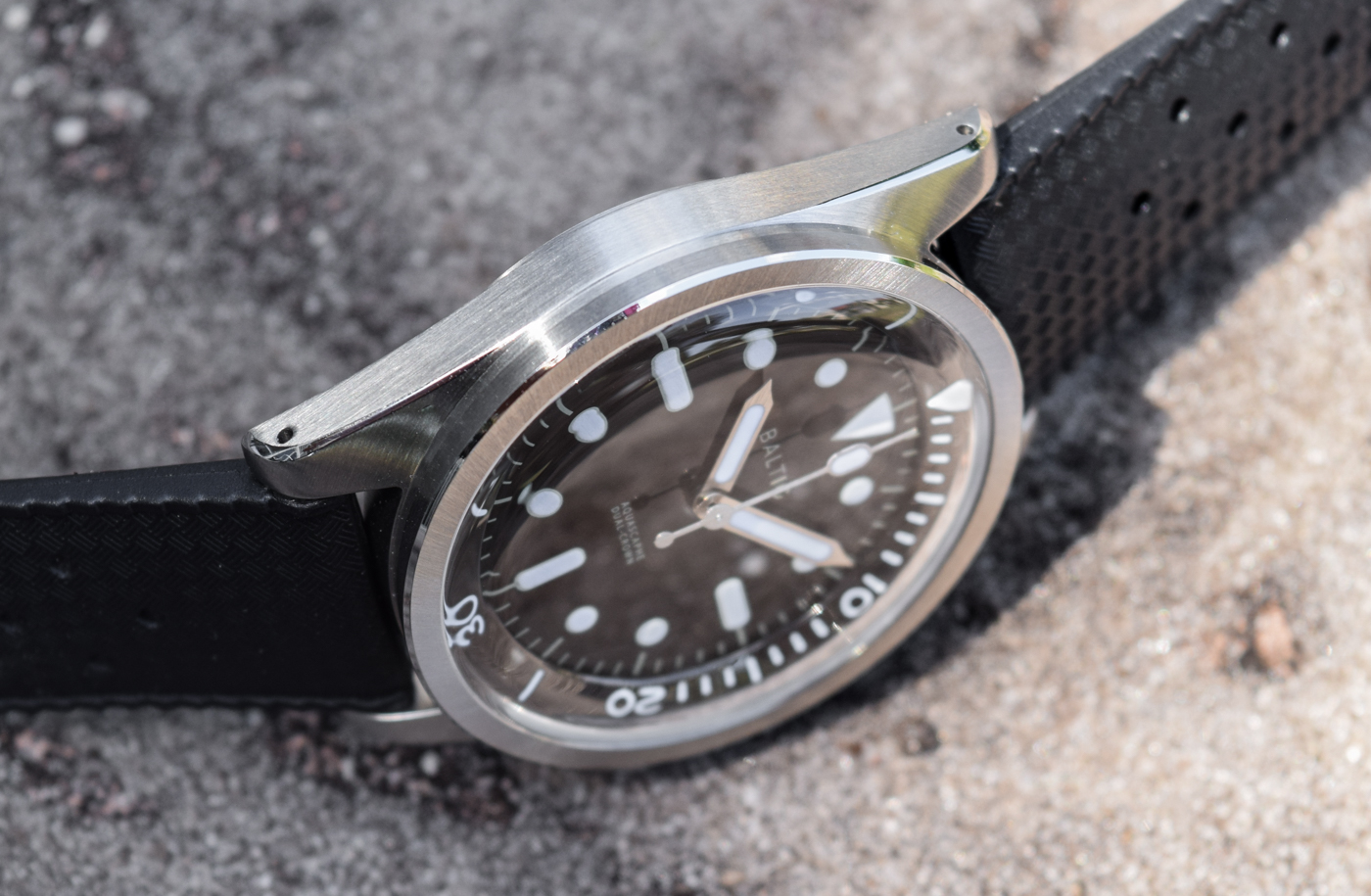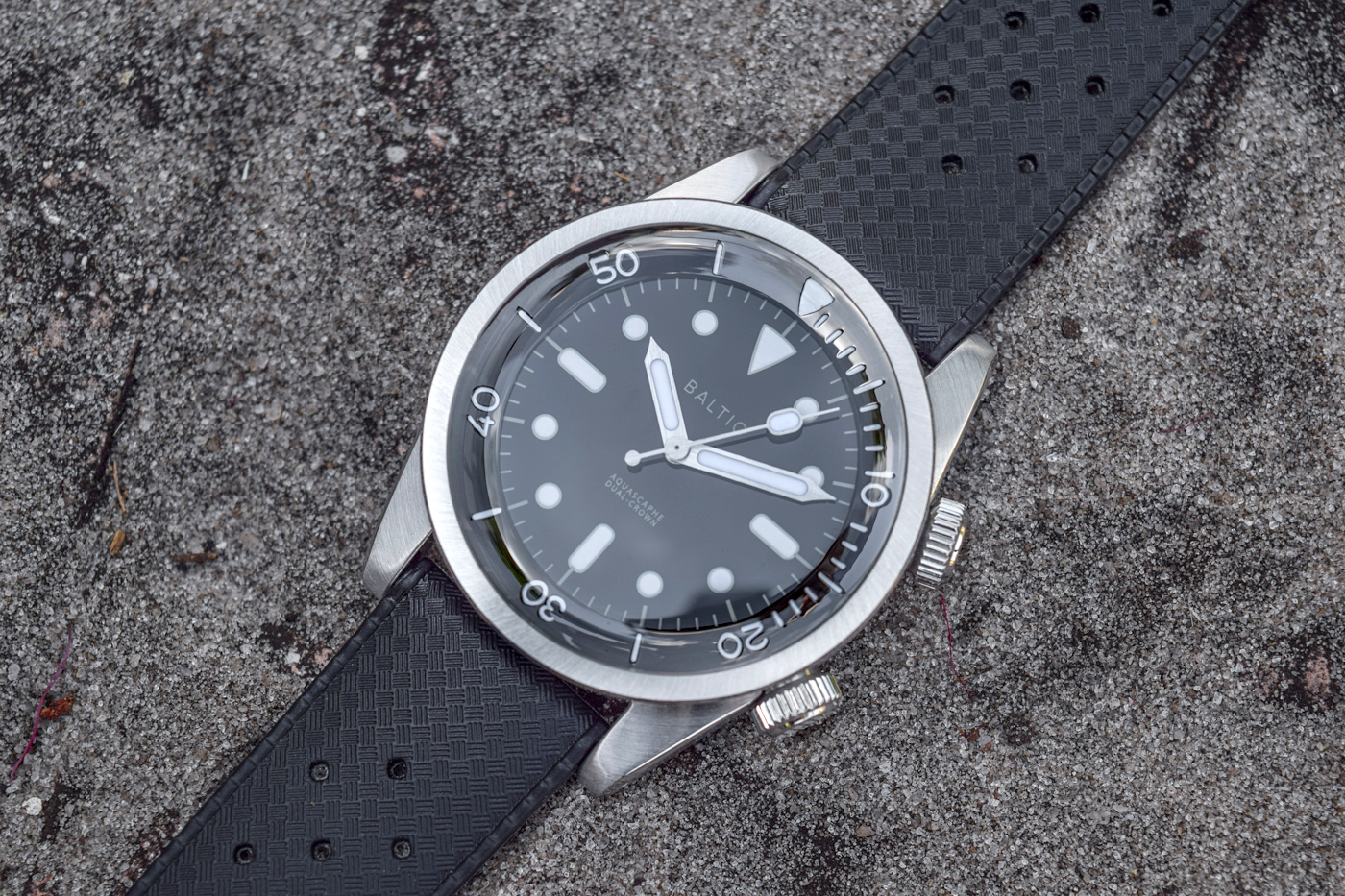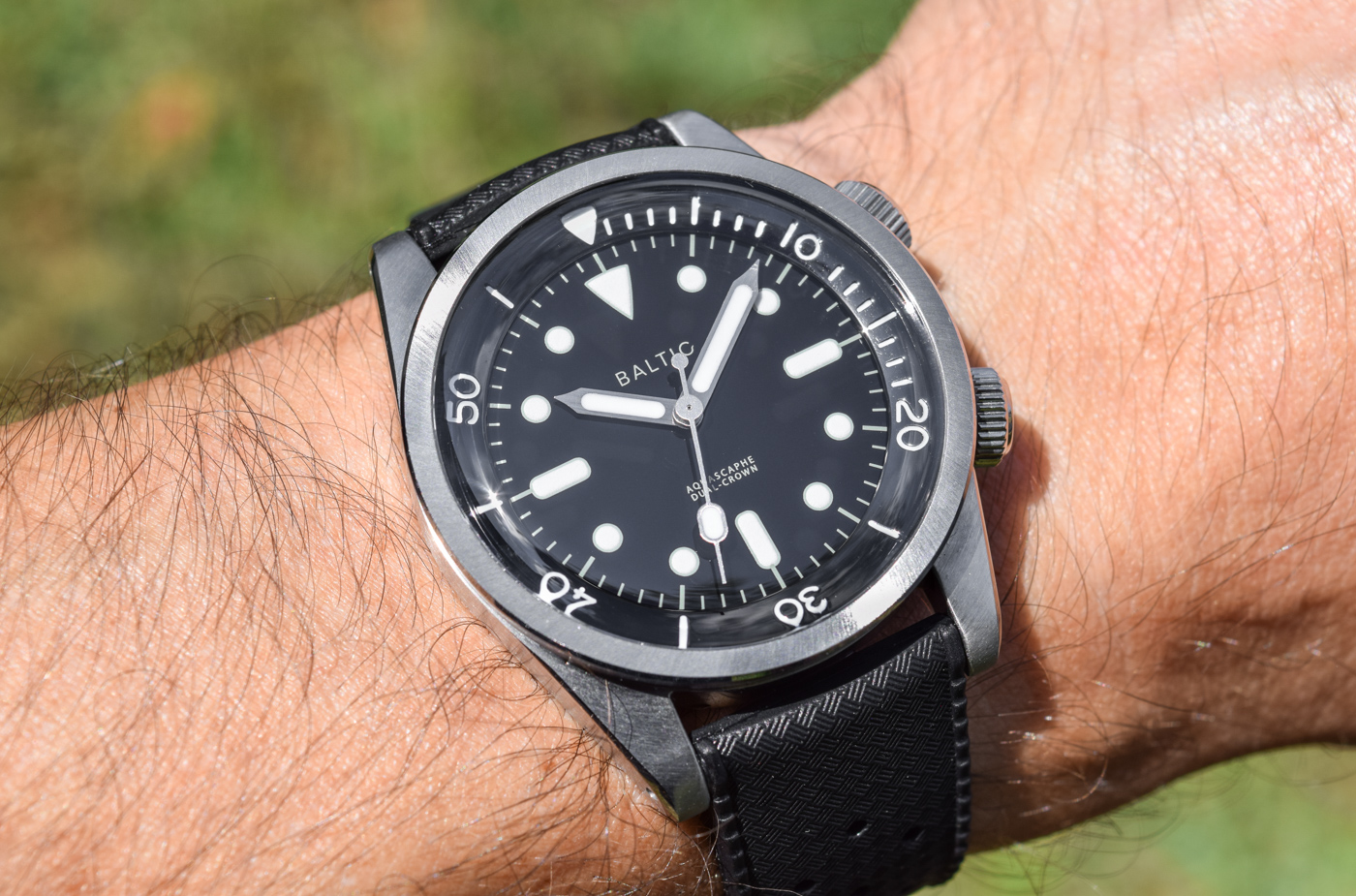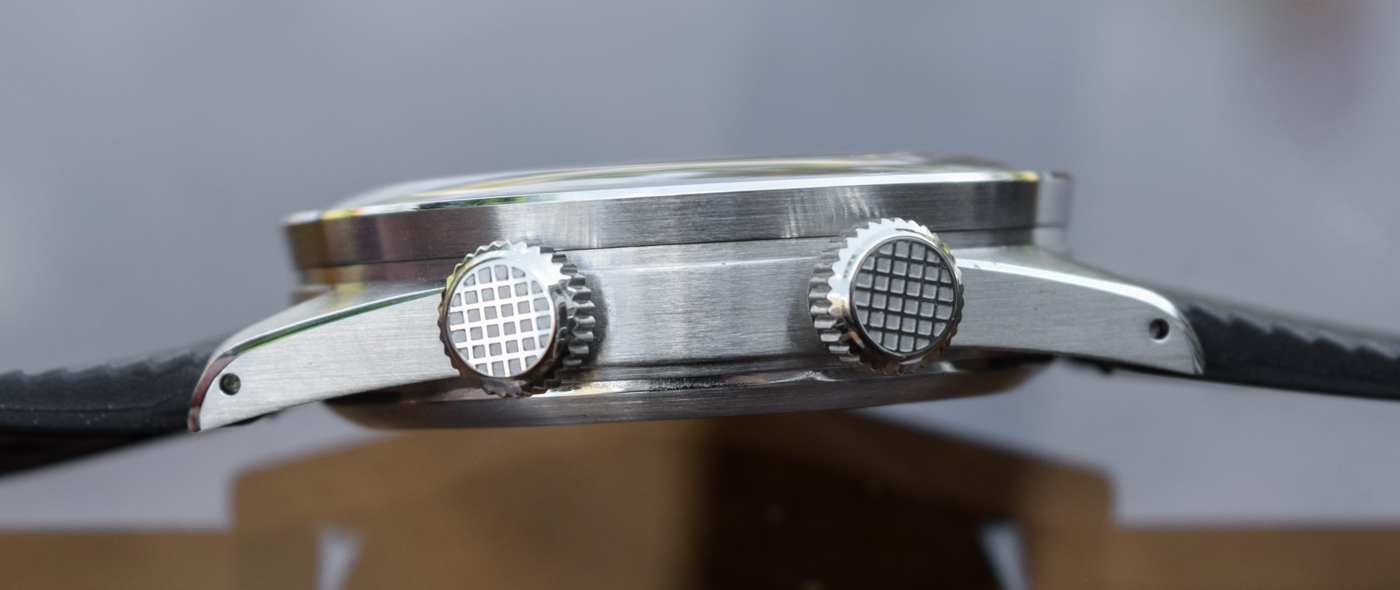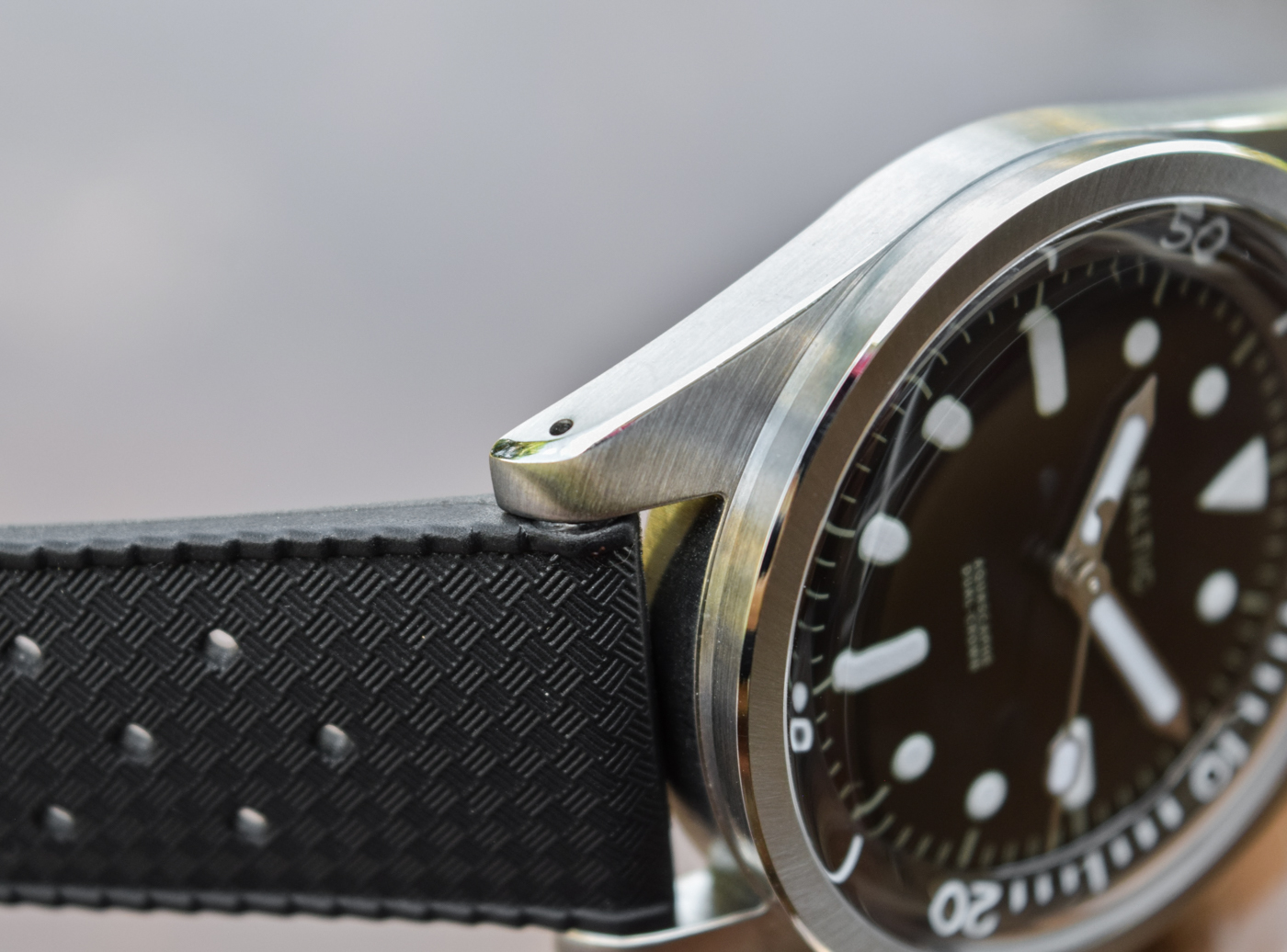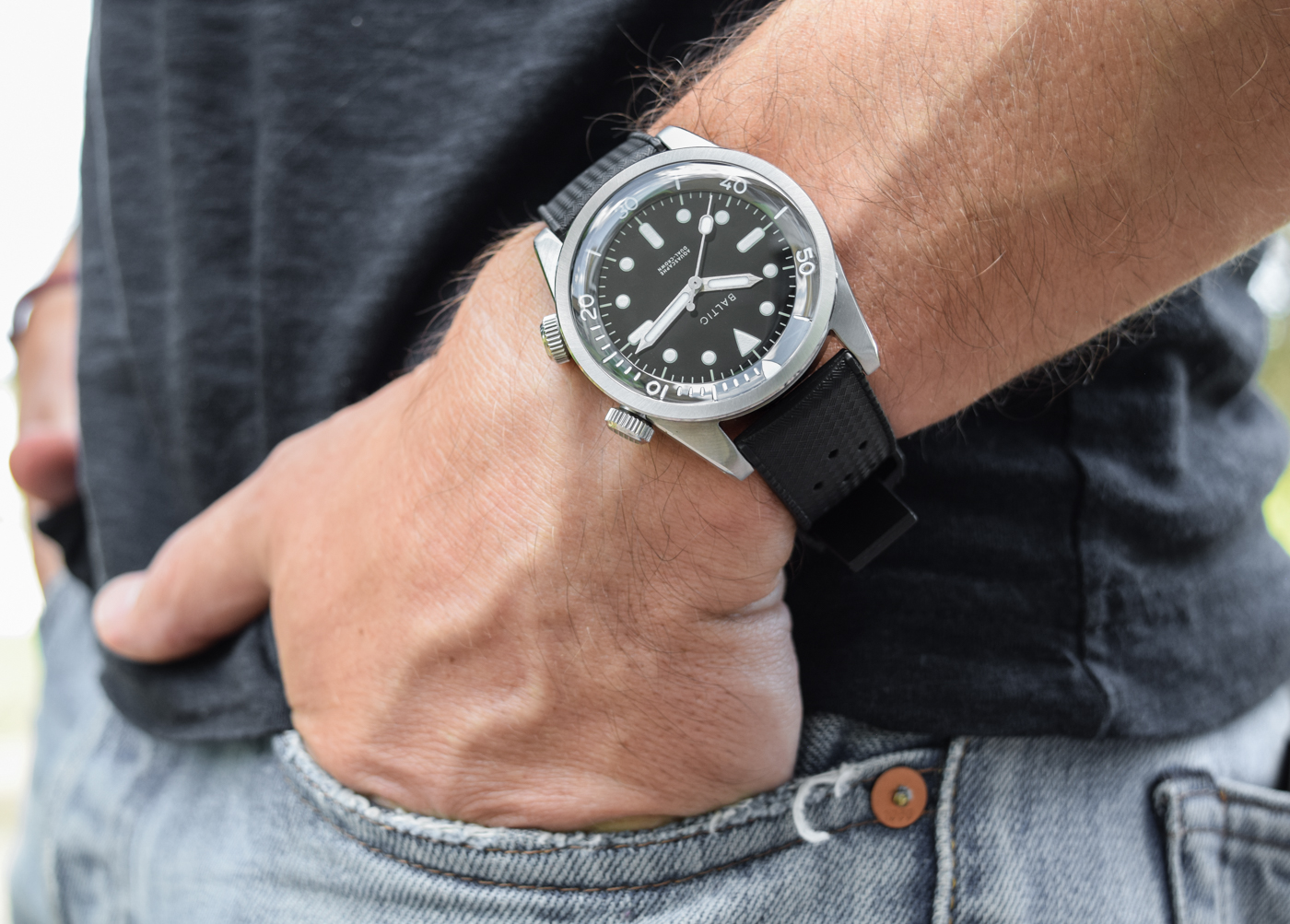
It’s hard to believe it’s been only four short years since Baltic, proudly headquartered in Paris, France, emerged resplendent onto the microbrand scene with its manually wound Bicompax and automatic, three-hand HMS 001. Both quickly left an impression on the enthusiast community thanks to their clean, vintage-inspired designs and approachable price points. In an equally impressive follow-up, Baltic then released the Aquascaphe diver’s watch in 2018, cementing the brand as a major player in the busy and turbulent microbrand space.
Since then, Baltic’s collection has been updated several times with new versions of the aforementioned Bicompax and HMS, more Miyota-driven Aquascaphe models, as well as a Swiss Soprod C125 caliber-powered Aquascaphe GMT, a watch that left me thoroughly impressed when I reviewed it earlier this year. Still, the core of the brand’s designs lived within those three formats: a simple three-hander, dual-register chronograph, and a skin-diver-esque diver — that is, right up until the Aquascaphe Dual-Crown was recently unveiled.

Where the original Aquascaphe was essentially an updated take on something like the Blancpain Fifty Fathoms format of old, the new Dual-Crown takes the general idea presented by the Super Compressor cases produced by Swiss firm Ervin Piquerez S.A. (EPSA) for dozens of manufacturers in the 1960s and 70s and thoroughly modernizes the concept, both in form and function. Given my own well-documented amphibious proclivities, I jumped at the chance to check out Baltic’s newest diver, a sentiment that was only heightened with the release of an unusually good, short diving film Baltic produced to market the new watch. I’m serious, and I don’t usually plug marketing materials, but do check it out.
The question with this new Dual-Crown from Baltic then becomes, do we have a cutesy attempt from yet another microbrand to cash in on an iconic design of years past, or something a bit more special that carefully balances heritage inspiration with a thoughtful, modern execution? Let’s take a closer look.
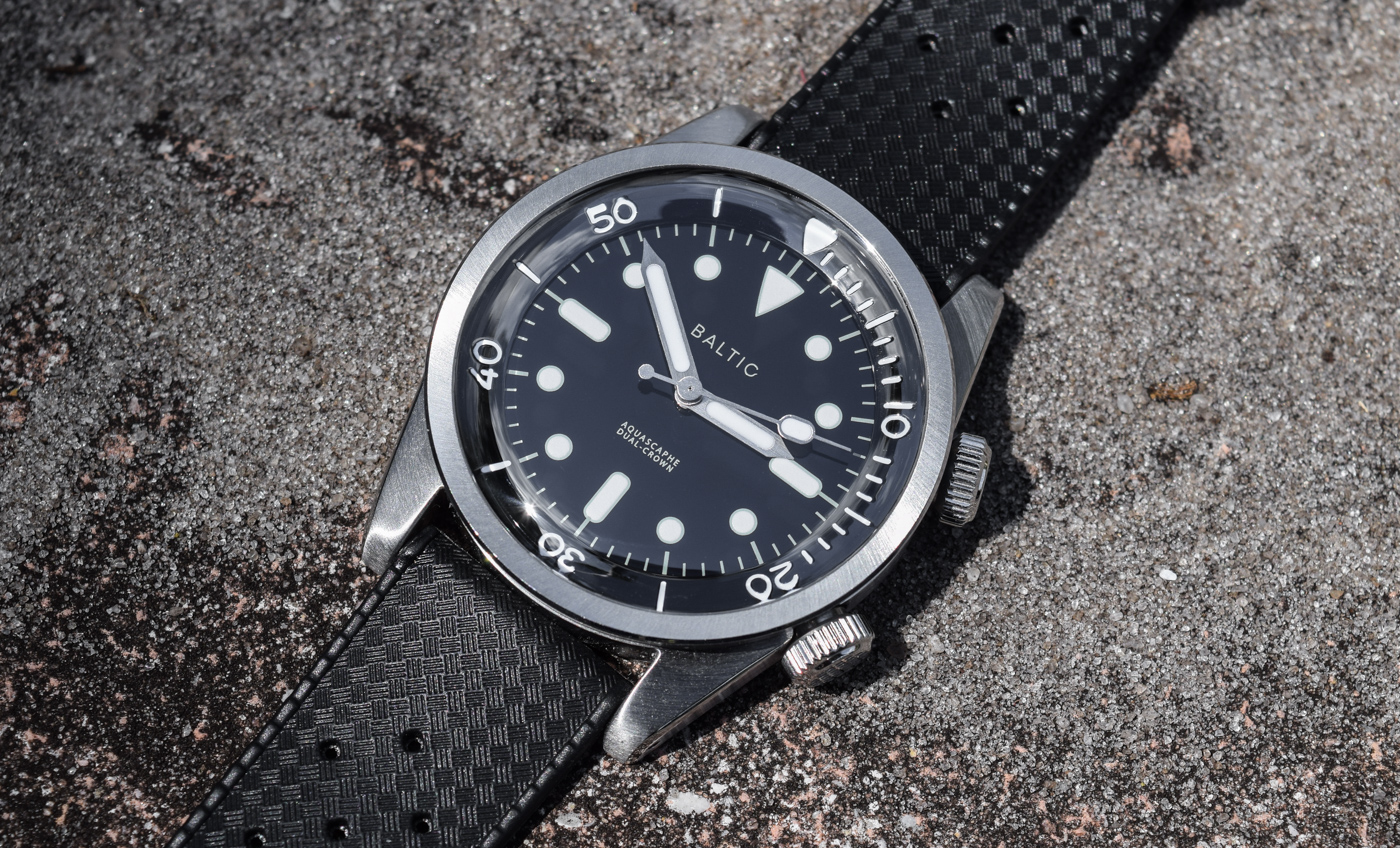
The Infernal Internal Bezel
To be frank, I have been hard on the internal bezel concept before, which in most modern executions is operated by means of a screw-down crown in the 2 o’clock position. While I intellectually grasp that the screw-down crown aids in preventing the dastardly ingress of water, it also means that the internal bezel is essentially useless for its theoretically intended purpose of timing dives, as most divers simply aren’t going to unscrew a crown on their watch once they’re in the water, which is typically when you set the bezel to time your dive, assuming any modern diver does such a thing at all.
So, the Longines Legend and Bremont Argonaut, while both great watches I enjoy in other respects, as well as countless microbrand attempts at this design thus far, lack legitimate undersea utility, at least in my eyes. That said, I at first winced at Baltic’s announcement of its own dual-crown diver, assuming Baltic had set its helm at the same unfortunate course in the design of its new watch. I couldn’t have been more wrong.
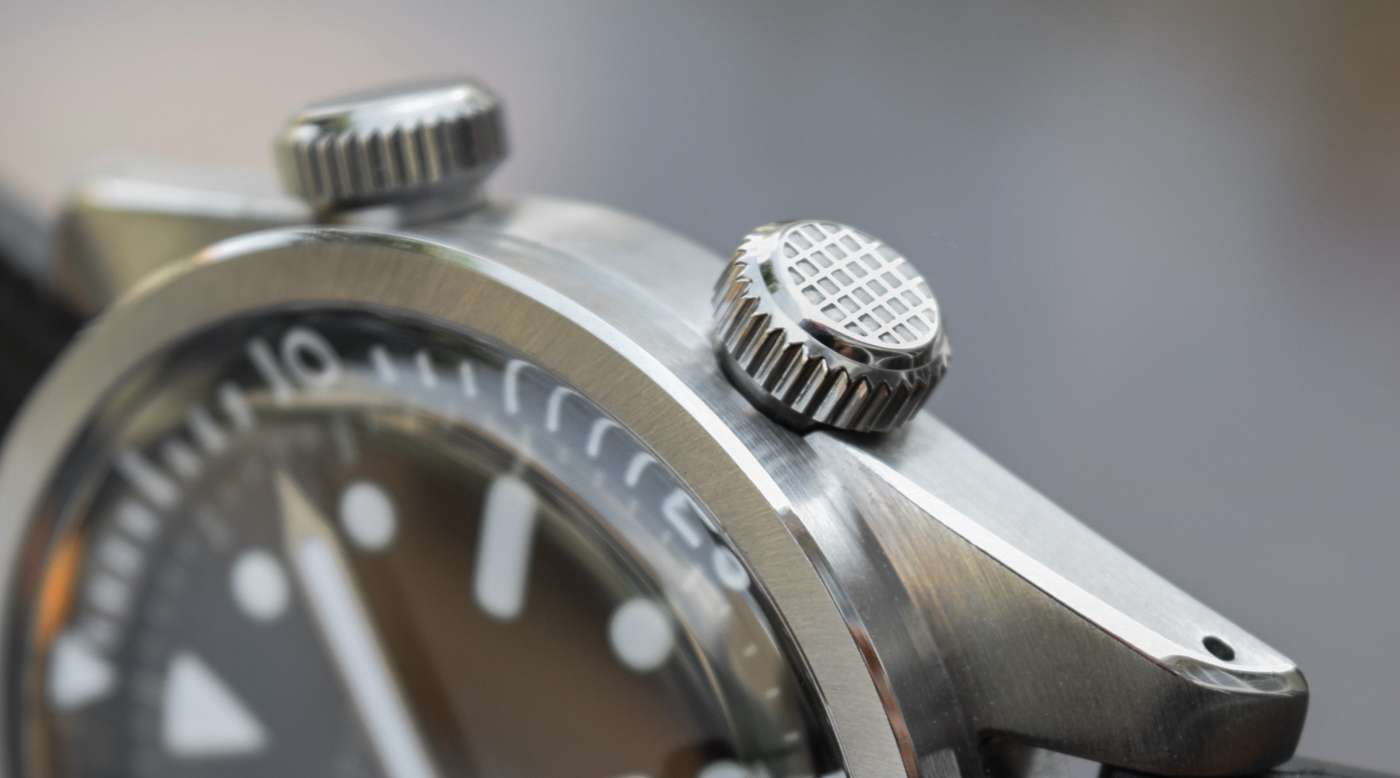
Like the original Super Compressor case concept, the crown that operates the Baltic Dual-Crown’s internal bezel doesn’t screw down and is designed for in-water use, ensuring the watch’s utility as a dive timer, while the crown at 4 o’clock for setting the time does screw down to provide as much security as possible. For those concerned, the watch is still water-resistant to 200 meters, which is likely deeper than you’ll dive, at least until Sandals resorts finishes its new extra-deep deep ends. Each of the new Baltic’s crowns, which look identical despite their varied functionality, also features an engraved cross-hatch design as a small homage to the original Super Compressor watches.
For me, Baltic could have left it there, brushed the rest of a simple watch case, and I would have been pretty pleased with the Dual-Crown’s case construction, but the brand has also come up with an elevated case design which, while somewhat straightforward from a distance, presents some captivating elements upon closer inspection and at various angles. It’s also important to note here that this watch is also available with a PVD-coated case that mirrors the same finishing techniques we have here. Before we get into the case finishing, it’s important to note that the wearability is also excellent, even on a smaller wrist like my own 6.25” example, with a restrained 39mm width, 47mm lug-to-lug distance, and surprising 11.9mm thickness.
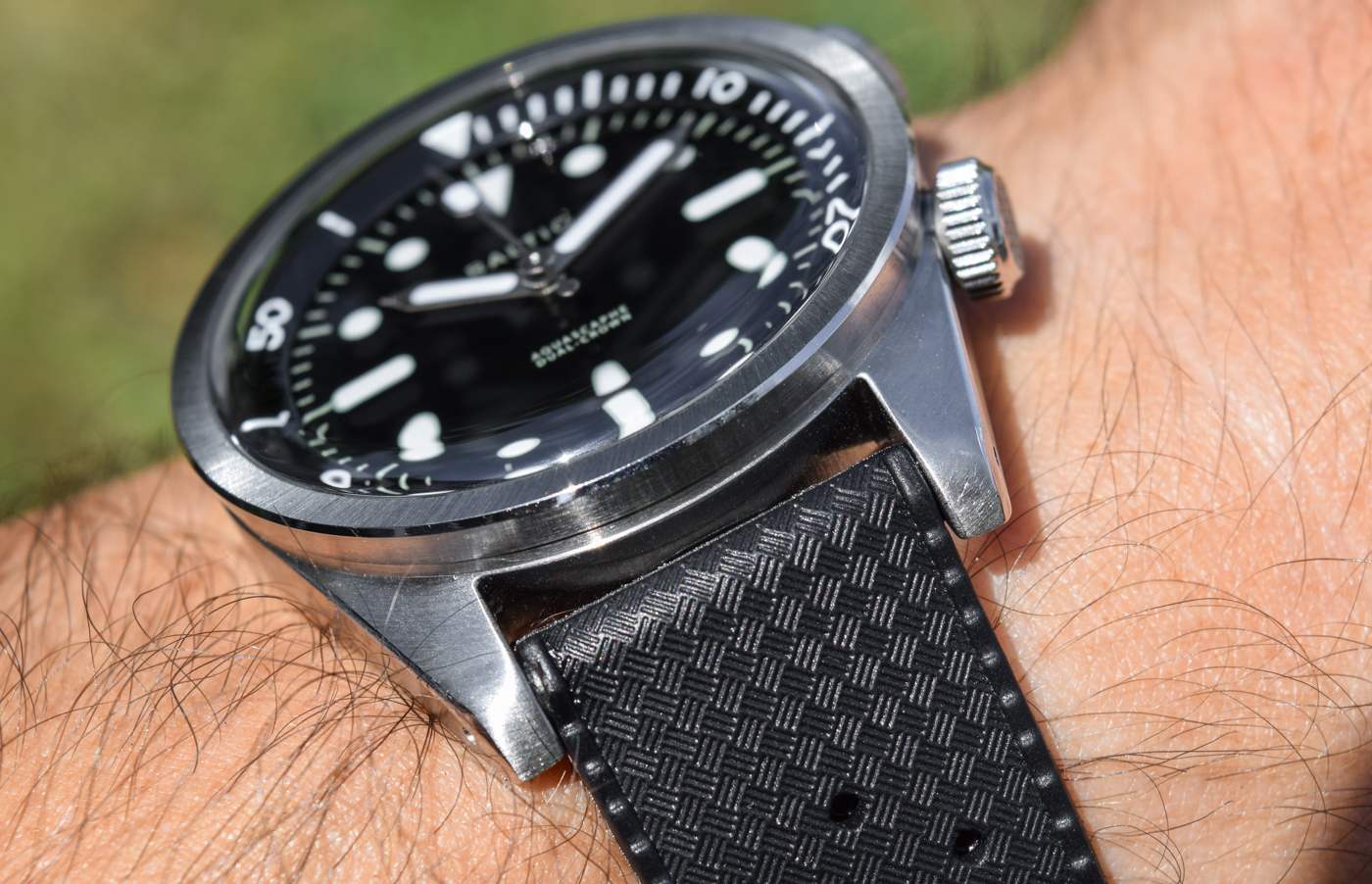
The fixed external bezel is sort of conical, wider at the top than the bottom, and features a narrow, highly polished bevel separating a stain-finished side from atop, which is, in a move I have not seen before, brushed in a spiral pattern I’m told was inspired by some vintage Universal Geneve watches. In addition, the general shape of the lugs is similar to the other Aquascaphe watches, though here it is equipped with another narrow polished bevel at the edge that does wonders, along with the other bits of polishing, in garnering visual interest and catching the light.
While the caseback on this pre-production model is sterile, final production models will feature a limited number engraved at the center. And finally, addressing the front of the watch, we have a sapphire crystal that is domed, though not to a degree that requires comparison to vintage acrylic crystals or the profile of the other Aquascaphe watches. The lack of a box section shape does help with distortion at the outer edges of the dial surface, but I must say this crystal is a bit reflective overall, as you’ll likely note in these images. The combination of the updated case and modern crystal profile confirms this is something of a more modern take, a theme most powerfully felt in the dial design.

Dialed-In Design
Heretofore, the Aquascaphe’s general dial design has been more or less set in stone, even as case or bezel material has changed or complications have been added, as in the Aquascaphe GMT. Along with a new case design, the Dual-Crown also makes use of a new dial, again presenting a more modern feel than many other options from the brand.
With a triangular index at noon, pill-shaped indices at the other cardinal points, circular markers in between, simple hash marks for a minute track, polished pencil-shaped hands, and a seconds hand with a matching pill-shaped tip, this dial design feels minimal in a carefully executed and purposeful kind of way. Dial text is pleasantly minimal and printed in gray against a glossy black background, making it feel like telling the time is the main design priority overall, besides looking cool, of course. Taking a look at the internal bezel, located in much the same position as a chapter ring on a traditional dive watch, we again have a triangular zero marker and simple printed numerals at the other 10 minute positions, with the first 15 minutes sporting minute markings for precisely timing shorter intervals like a decompression stop or, if we’re being real, cooking pasta.
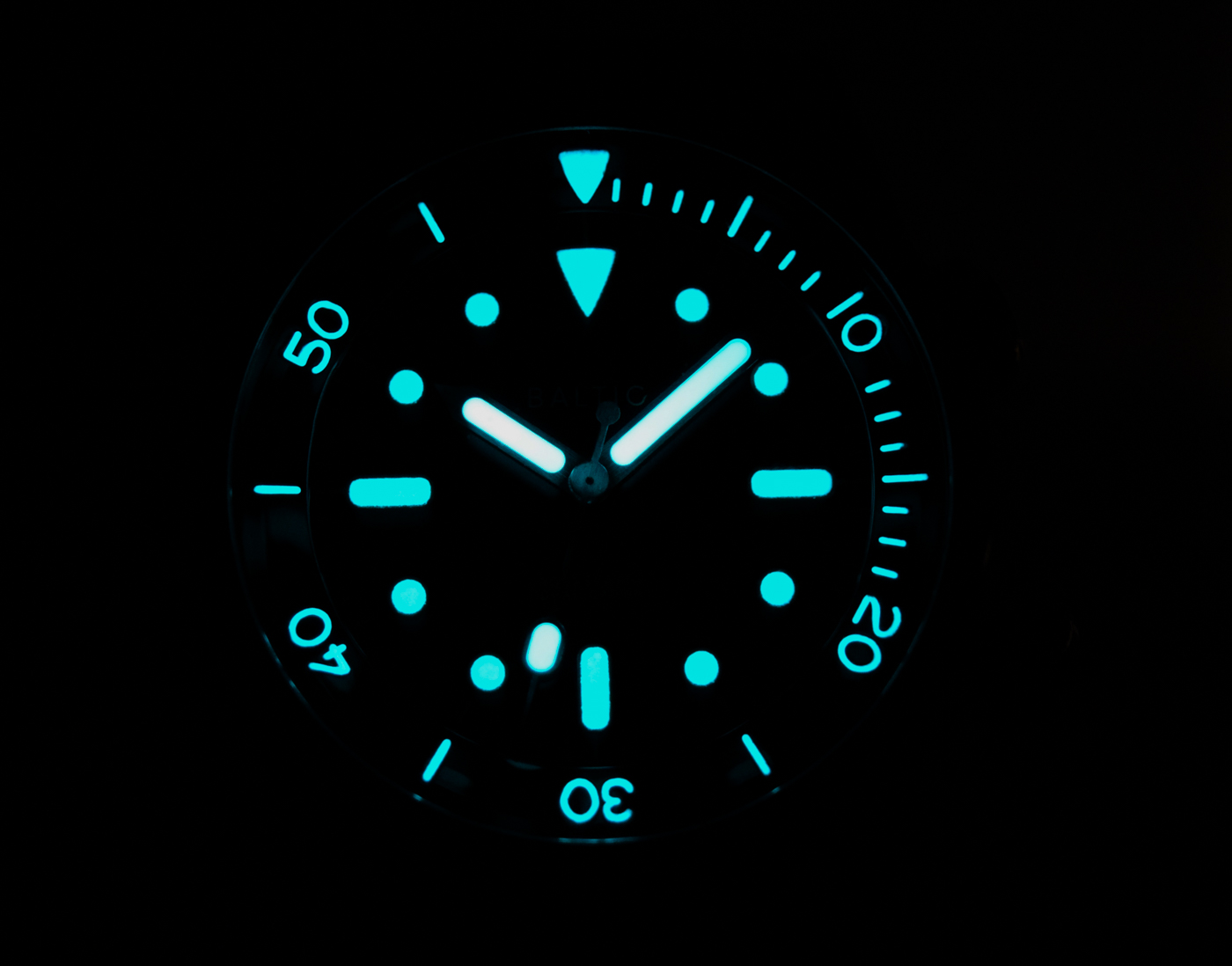
The indices, hands, and graduations on the internal bezel are all filled with BGW9 Super-LumiNova which glows blue and works very well in my experience, though not to a Seiko level or anything extreme, and solid lume is always a nice feature on a dive watch.
Overall, this is one of my favorite dials from Baltic thus far, even sparser than the brand’s earlier models while still presenting a unique design and one that actually feels intended for diving rather than simply tugging at one’s vintage-loving heartstrings. The internal bezel is seamlessly integrated, and both dive time and time of day are easily read at a glance in all lighting conditions. Also resembling the majority of other Baltic watches (other than the GMT), the Dual-Crown excludes a date function, a factor pleasantly shared by the Miyota movement oscillating within.
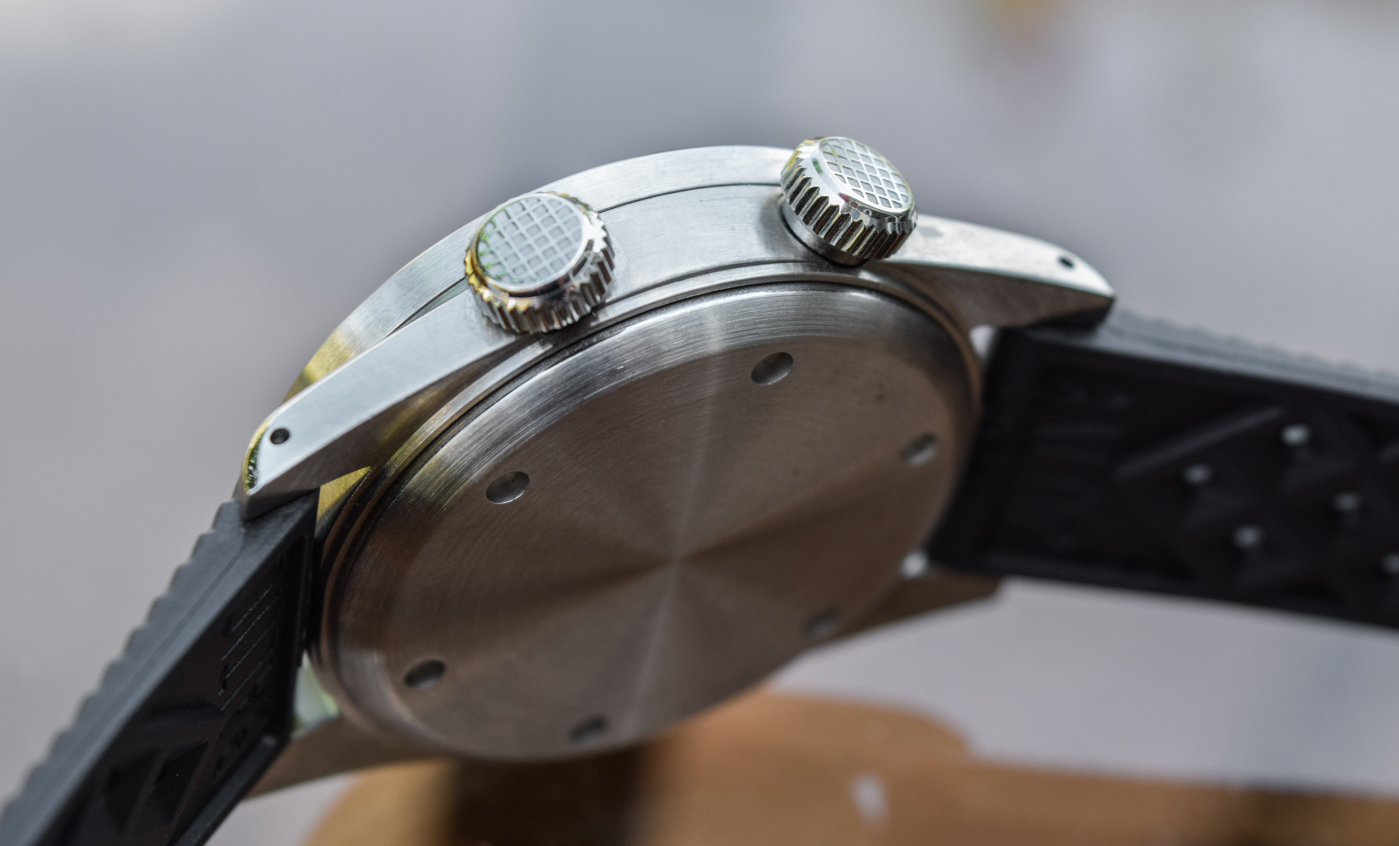
Miyota 9039
Much of the overall value proposition embodied in Baltic’s watches stems from the inclusion of Asian third-party calibers like the Seagull ST1901 in the Bicompax or the Miyota 9039 utilized in this watch, as well as earlier Aquascaphe models (other than the Swiss Soprod C125 in the GMT). While perhaps a bit unsexy in its finishing, the 9000 series from Miyota was intended as a direct competitor to ETA calibers like the 2824-2 and 2892-A2, as well as their Sellita counterparts, and the movement has earned a strong reputation for its durability, accuracy, and svelte height.
Beating away at 28,800 VPH or 4 Hz, the Miyota 9039 is a true no-date (without even a “phantom” date position in setting the crown) automatic caliber, equipped with hacking and hand-winding functionality and 42 hours of power reserve. It’s also important to note here that Baltic watches are assembled in France after having their various components sourced from around the world. Baltic is actually impressively transparent as far as its sourcing and also regulates these otherwise off-the-rack calibers to an impressive degree in its Besançon workshop. The example I reviewed kept time at around plus five seconds a day when worn, which is a lot better than I could have reasonably expected given the approachable price point of the Dual-Crown.
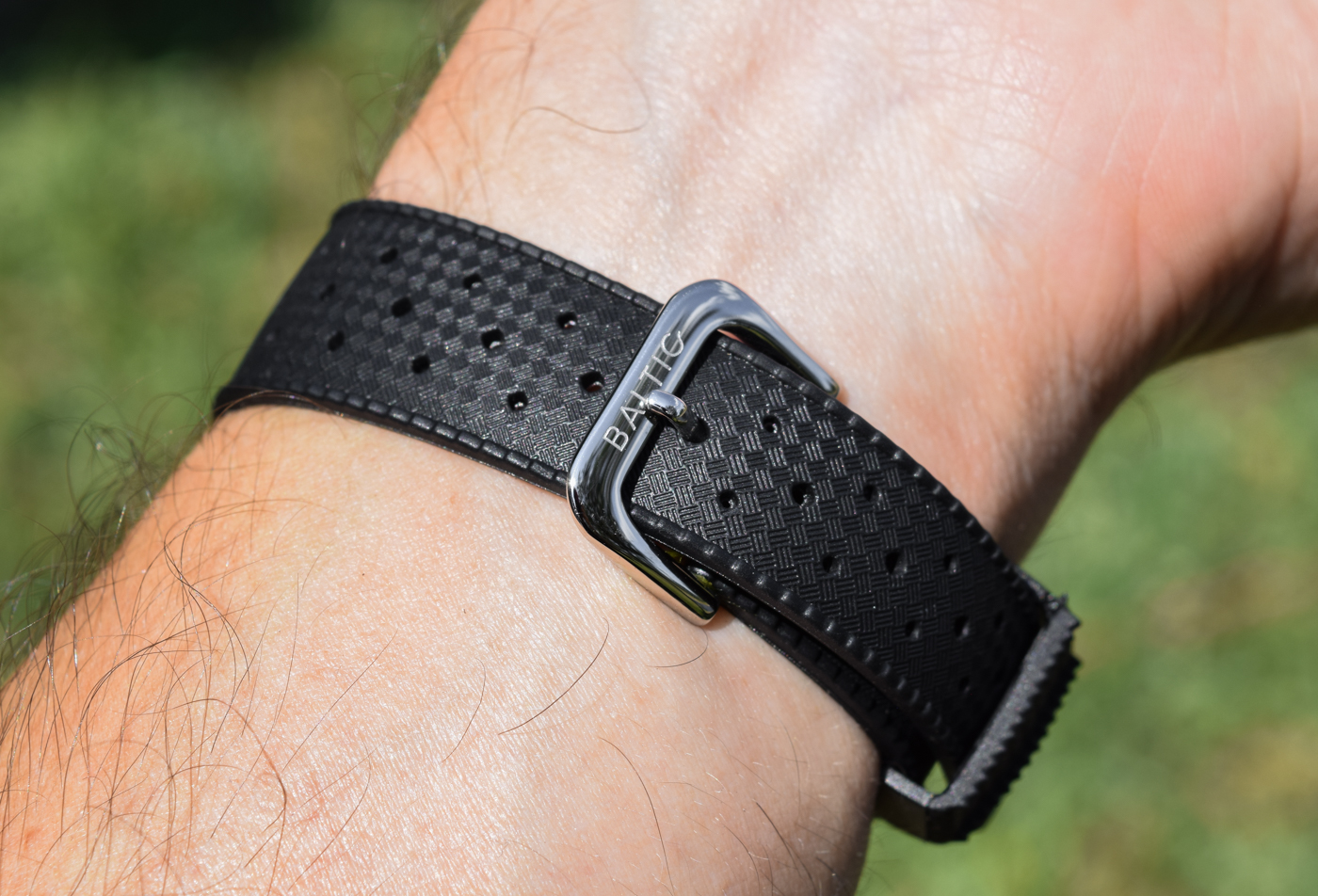
Roll Strapped: Tropic-Style or Ocean-Friendly Options
Where the dial and even the case have some more modern elements to them, the Dual-Crown is still strongly pulled, not unlike Marty McFly, into the past, thanks to the Tropic-style strap, which is of reasonable quality, and one of two options for this piece from Baltic, along with a SEAQUAL fabric option produced from plastic ocean waste, a cool concept I would have liked to check out. Baltic’s beads-of-rice bracelet, which fits all of the brand’s watches, also fits this one, which is a really nice element of universality for collectors of multiple watches from the brand. For me, strap choice on this Dual-Crown is big, as it can either give off a strong mid-century feel on the included tropic or a more utilitarian feel on a more modern rubber or something like a NATO strap. In pretty much any case, this new Aquascaphe really looks the business.
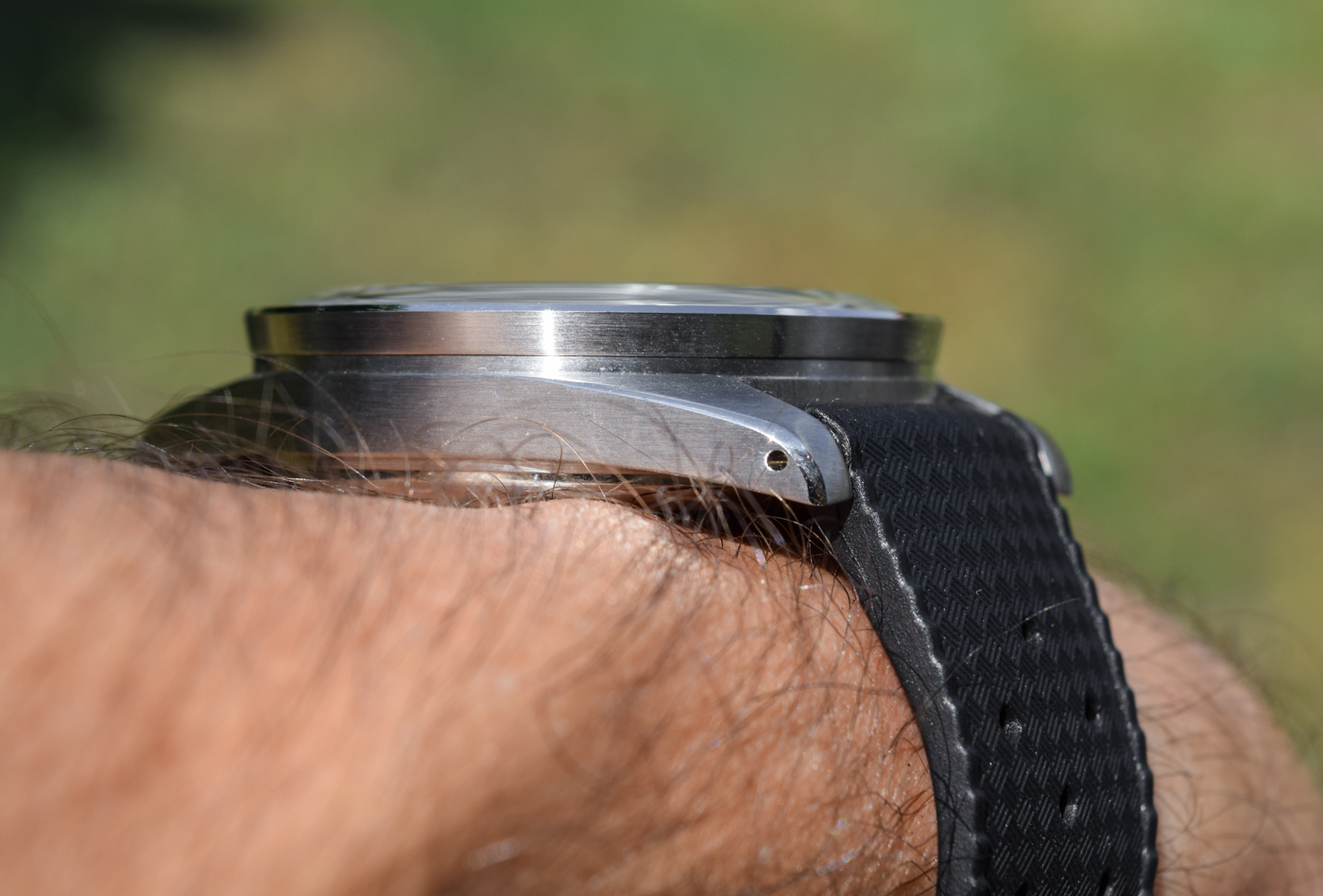
Overall Impressions
Thus far, about the only way to fault Baltic would perhaps be to say the brand has dipped into the original Aquascaphe well too many times, though I personally disagree with that sentiment. But even if you do feel that way, here is another completely new watch carefully integrating an old-school design format in a truly modern package, and at a price that, like other offerings from the brand, leaves little in the way of argument compared to its peers.
Overall, the Dual-Crown is attractive, well-thought-out in terms of the diving use case, and even features a few elements of elevated finishing that help with the overall versatility of the watch. I would perhaps even dub this Baltic a “dress diver,” though the Dual-Crown maintains 200 meters of legit water resistance and has taken everything I’ve thrown at it in stride in daily use while looking new. If you’re hesitant about the idea of a microbrand, or unsure about watches that dip a toe in homage waters, Baltic, and especially this Dual-Crown, are excellent options to check out, standing alone as a new design while tipping a hat toward one of the most proven and nostalgic dive watch formats. The Baltic Aquascaphe Dual-Crown is available for pre-order from Baltic-Watches.com for around $660 depending on current exchange rates.
Necessary Data
>Brand: Baltic
>Model: Aquascaphe Dual-Crown
>Price: $660
>Size: 39mm-tall, 47mm lug-to-lug, and 11.9mm-thick.
>When the reviewer would personally wear it: This thing could be worn in almost any environment given the versatile look and capable water resistance, presenting an excellent summer watch.
>Friend we’d recommend it to first: Design nerd who loves vintage and also wants a capable diver with a more refined vibe overall.
>Best characteristic of watch: The non-screw-down crown for operating the internal bezel is an excellent example of a brand really understanding the intended use behind the watch’s concept. Bravo.
>Worst characteristic of watch: For the money, it’s pretty tough to fault this one, but when forced to think of something, the lume could last a bit longer.

